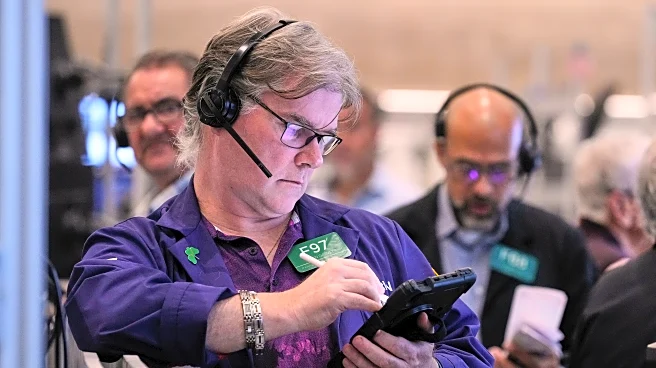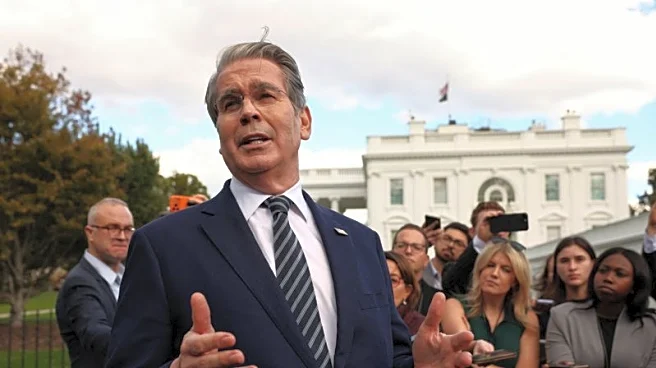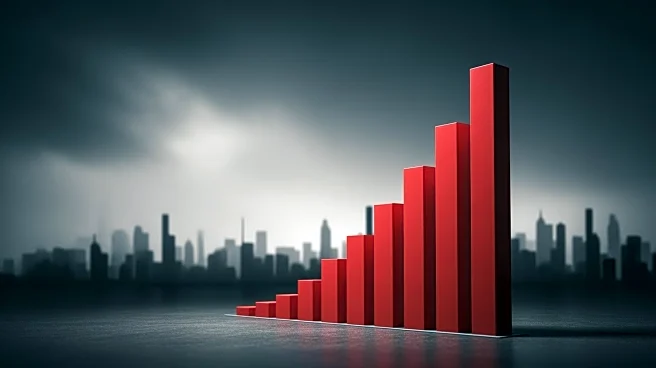What's Happening?
The World Gold Council has emphasized the enduring resilience and diversification benefits of gold, particularly in the face of economic uncertainty and a weakening dollar. According to asset allocation
strategist Jeremy De Pessemier, gold remains a relevant investment option amidst geopolitical, fiscal, and trade vulnerabilities. The council's recent report highlights concerns over growth and inflation, which pose challenges for policymakers, especially as the Federal Reserve's dual policy goals conflict. Gold has risen over 50% this year, driven by fears of stagflation and the search for safe-haven assets. The report also notes that US equities have shown remarkable gains, raising concerns about valuation excess and concentration risk, while bond markets face uncertainty due to the Federal Reserve's easing cycle and potential upward pressure on long-term yields.
Why It's Important?
Gold's resilience is significant as it offers a hedge against instability in both equity and bond markets. With ongoing economic pressures, investors may increasingly turn to gold as a safe-haven asset. The report suggests that gold's appeal is growing due to its historical stability, especially as US equities and bond markets face potential volatility. The Federal Reserve's recent actions, including rate cuts, reflect a cooling labor market, but long-term yields could rise if domestic costs increase due to tariffs and reshoring efforts. This situation complicates the Fed's inflation targets and highlights the importance of gold as a diversification tool. As fiscal pressures mount, gold's role in investment portfolios may become more pronounced.
What's Next?
Gold's rapid price increase could lead to rebalancing and profit-taking, as technical indicators suggest potential short-term reversals. The monthly Relative Strength Index is above 90, and gold is significantly above its 200-day moving average, which may dampen consumer demand. However, ongoing trade tensions, declining interest rates, and fiscal pressures are expected to fuel substantial investment inflows into gold. Metals Focus projects that gold could exceed $5,000 per ounce by 2026, indicating continued interest in gold as a stable investment amid economic uncertainties.
Beyond the Headlines
The broader implications of gold's resilience include its role in diversifying investment portfolios and providing stability in uncertain economic times. As geopolitical tensions and fiscal challenges persist, gold's appeal as a safe-haven asset may increase, influencing investment strategies and market dynamics. The potential for gold to exceed $5,000 per ounce by 2026 suggests a long-term shift in investor behavior, with gold becoming a more central component of asset allocation strategies.













